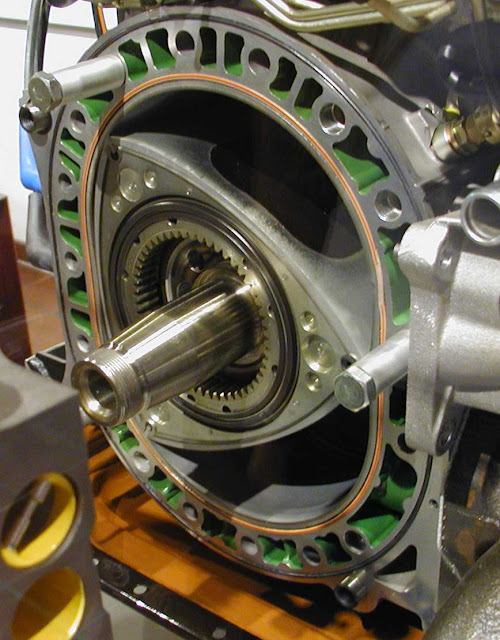Rotary (Wankel) Engines
Rotary engines, commonly known as Wankel engines, are a
distinctive type of internal combustion engine that differ significantly from
traditional piston engines. Named after their inventor, Felix Wankel, these
engines offer a compact, lightweight design and have been used in various
applications, from sports cars to aircraft. This article explores how rotary
engines work, their advantages, challenges, and their niche in the automotive
world.
How Rotary (Wankel) Engines Work
Unlike conventional engines that use pistons to convert fuel
into mechanical energy, rotary engines rely on a triangular rotor that spins
inside an oval-shaped housing. This design allows for a continuous combustion
cycle with fewer moving parts. The key components include:
Rotor:
A triangular-shaped component with curved sides that rotates
inside the housing.
Each corner of the rotor acts as a combustion chamber.
Housing:
An oval-shaped chamber where the rotor spins.
Contains intake and exhaust ports as well as spark plugs for
ignition.
Eccentric Shaft:
Converts the rotational motion of the rotor into usable
mechanical energy.
The combustion process in a rotary engine can be summarized
in four stages:
Intake: The rotor draws in the air-fuel mixture through the
intake port.
Compression: The mixture is compressed as the rotor moves.
Combustion: The spark plug ignites the compressed mixture,
driving the rotor forward.
Exhaust: The burnt gases are expelled through the exhaust
port.
This continuous motion results in smoother operation
compared to the up-and-down motion of pistons in traditional engines.
Advantages of Rotary (Wankel) Engines
Compact and Lightweight:
The simple design allows for a smaller and lighter engine
compared to piston engines with similar power output.
High Power-to-Weight Ratio:
Rotary engines deliver impressive power relative to their
size, making them ideal for performance-oriented vehicles.
Smooth Operation:
The absence of reciprocating motion eliminates vibration,
resulting in a smoother driving experience.
Fewer Moving Parts:
With no valves or camshafts, rotary engines have fewer
components that can wear out, potentially reducing maintenance.
High RPM Capability:
Rotary engines can achieve high revolutions per minute
(RPM), contributing to their sporty character.
Challenges of Rotary (Wankel) Engines
Fuel Efficiency:
Rotary engines are less fuel-efficient compared to piston
engines, as they often consume more fuel for the same power output.
Emissions:
The design can lead to incomplete combustion, resulting in
higher emissions.
Durability:
The apex seals on the rotor, which maintain compression, are
prone to wear and require regular maintenance.
Oil Consumption:
Rotary engines typically consume more oil due to their
design, which uses oil to lubricate the apex seals.
Limited Application:
The niche design has limited widespread adoption,
restricting its use to specific vehicles and enthusiasts.
Applications of Rotary Engines
Rotary engines have been used in various applications over
the years, including:
Sports Cars: Mazda is the most prominent manufacturer of
rotary engines, famously using them in vehicles like the RX-7 and RX-8.
Aviation: Rotary engines’ lightweight design makes them
suitable for light aircraft.
Motorcycles: Companies like Suzuki have experimented with
rotary-powered motorcycles.
The Future of Rotary Engines
While rotary engines have become less common due to their
fuel efficiency and emissions challenges, they are not entirely obsolete.
Manufacturers like Mazda are exploring ways to modernize rotary technology,
including its use as a range extender for electric vehicles. Advances in
materials and engineering could address durability and efficiency issues,
giving rotary engines a new lease on life.
Conclusion
Rotary (Wankel) engines are a fascinating example of
innovative engineering, offering unique advantages and challenges. Though not
as widely adopted as piston engines, they have carved out a niche in the
automotive and aviation industries. As technology continues to evolve, rotary
engines may yet find renewed relevance in a world increasingly focused on
efficiency and sustainability.

Comments
Post a Comment